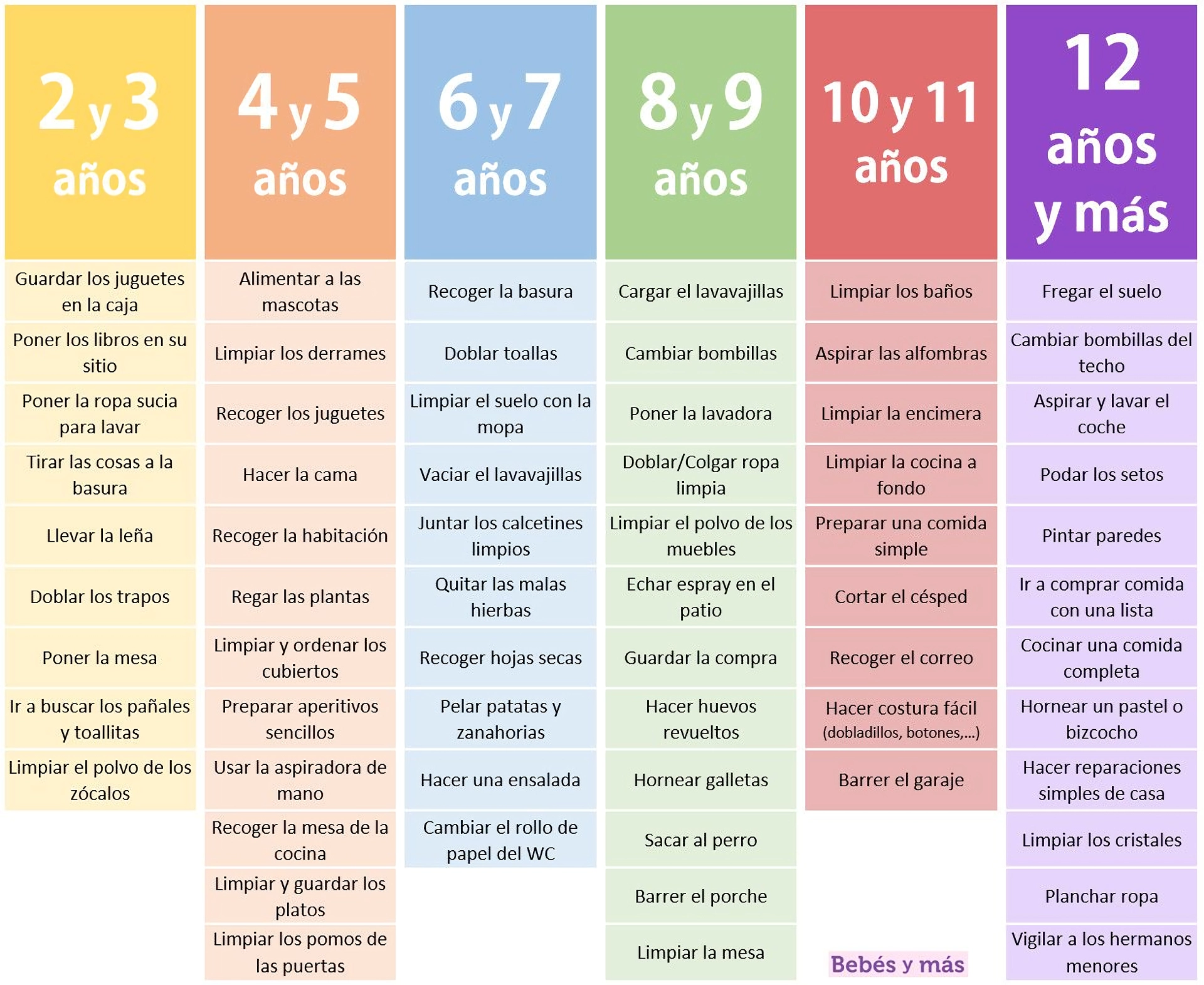So that parents do not end up becoming their butlers, we have to promote their autonomy, that they do things by themselves.
There are many mothers (and many fathers) who at some point say that they can't take it anymore, that they are exhausted, that they are tidying up, cleaning and continually behind their children all day to ensure that everything is in its place and minimally presentable.
Well, you are not alone… we all walk more or less the same. However, much of the parental “work” would be taken over by the children if given the opportunity to do so. It is a question of giving them autonomy, of making it easy for them to collaborate and of making them participants in their "destruction" and "disorders".
That is why today we tell you this: “let them be autonomous, so that they can grow”. And to find out when they are trained, we leave you with a table inspired by Montessori to find out what tasks they can do at each age.
►Let it grow
Maybe you don't believe it (or maybe you do), but there are many parents to whom I have to say this in the consultation: “let him grow”, or “help him grow”. Because they are four or five years old and hardly know how to dress themselves, they don't drink water except when they ask for it, many are still bathed and almost, almost, fed.
What do I mean? Well, they tell me things like "it's that he's very close to me", "it's that he sleeps alone, but he comes to my bed every night", "it's that I see him as very baby", "it's that I think I'll have problems with the diaper", "it's that he barely plays with other children", etc., and I tell them not to worry, that it's okay for the child to do all that, but that there are many children who are still anchored in the stage of baby, and they have to be able to turn the page.
But in order to turn the page and that parents do not end up becoming their butlers, we have to promote their autonomy, that they do things on their own. It doesn't make sense that on weekends, for example, we dress them up. Let them do it. You can leave her clothes at her height and they can put them on… let them reach her clothes. And if you prefer to give him what you want him to wear, give it to him, but don't dress him, let him try.
autonomy in children
It doesn't make sense that the child is thirsty and has to come to tell you that he wants water. Leave the plastic cups in a drawer that you can open, or outside, at a height according to your height. And if you want, even a bottle of water for him to serve himself.
And so with everything. Let him see that he can do it. Let him try. Let him do it. That he start taking care of his life, that he has the age and ability to start doing it.
Do not force, but allow to grow
Do not force or force the child to do things. It doesn't make sense that we parents do everything and suddenly force him to do it. He has to get out of it, wanting to do it, wanting to collaborate, wanting to be one more, like you, a participant in his image, the order of the house, cleanliness, hygiene...
So suggest, invite them to do it, or directly make it fun (if possible): sing, laugh, make them laugh while you do it, tell them stories... so it can even be fun for you too, even if it takes a little longer.
►The table inspired by Montessori to know what tasks can be done at each age:

